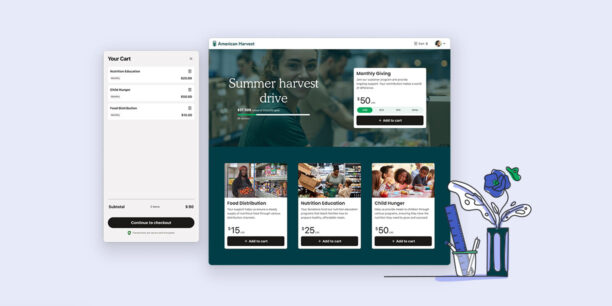7 Steps of a Successful Recurring Revenue Program

Request a Demo
Learn how top nonprofits use Classy to power their fundraising.
Have you ever been frustrated by the prospect of having to constantly come up with innovative ways to fundraise for your organization? Do you wish that you had a steady stream of monthly revenue that you could rely on to build your organization’s programs? If you’re like most development professionals, the answer to these questions is, “Yes!” With some planning and effort, you can establish a recurring revenue program to stabilize funding while strengthening the relationship you have with your supporters. Here are seven components critical to managing a successful recurring revenue program.
1. 60/10/40 rule
60% planning, 10% execution and 40% program management. Yes, it does take 110%. Recurring campaigns require active management and are not a “set it and forget it” kind of thing.
2. Think in numbers
Quantify your supporters’ monthly donation in terms of tangible results. It is important to detail why a recurring donation is important the work you do. For example, be clear that $25/month funds one child’s yearly school tuition. Losing that $25/month could risk that child’s education next year.

3. A targeted campaign
A great way to launch a recurring revenue program is with a targeted, time-based campaign. I suggest limited the campaign to 2 weeks, so your efforts are extremely focused and your message very defined. You can use social media, email newsletters to current supporters, and ask your evangelists to reach out to new networks for support. Executing a strong recurring donations campaign once can allow you to build upon the campaign year over year and make it an annual event.
4. Make recurring donors special
Reserving a special designation for your recurring supporters can deepen their level of engagement with your organization. Call them what you will, but make them feel special. For example, at Team Rubicon, monthly donors are enrolled in our Support Squad. The Support Squad received unique communication, “swag,” and access to exclusive events. When you make recurring donors feel more involved with your organization, simply by providing them additional insight to your organization, they will naturally feel more in touch with your mission.
5. Scale engagement
To elaborate on #4, recurring donors don’t just require special categorization with more communication, but the way you engage them should be uniquely meaningful. For some that will mean a quarterly call, e-mail or newsletter to update them on how their investment has impacted the organization. At the very least, everyone should receive a personalized thank you. Once you’ve established a definition of “uniquely meaningful” for your organization, it is important for your organization to scale your donor engagement.
Tracking how you’ve converted ordinary site visitors or one-time donors into recurring donors is an important part of scaling, as is having a communications strategy that keeps donors engaged and expanding the reach of your message through their own networks. Team Rubicon has been utilizing the Classy/Salesforce integration as a tool to scale.
6. It’s a team effort
In order to build a robust recurring revenue program, it is critical to have everyone from your board to your volunteers helping out. That means educating everyone about your program, and tasking him or her with helping manage and grow it. Unlike other events, which can usually be left up to the development team, a recurring revenue program requires all hands on deck.
Create a guide for your organization’s staff and volunteers that explains the recurring revenue program’s mission, goals, and tangible impact per level of recurring gift amount. Everyone should be on the same page to maintain cohesion within the organization and field supporters’ questions about deepening his or her commitment to your nonprofit. In short, don’t make the first time a board member or volunteer hears about the program the day a potential recurring donor asks them about it.
7. Know your cost
Take into account how much it costs your organization to acquire one donor, as well as, on average, a donor’s lifetime value. When embarking on a recurring donations campaign, it is important that your organization understands the potential of each contact. Building a recurring revenue program means you want to turn as many onetime donors into recurring ones; making data driven decisions will help you increase monthly recurring revenue by maximizing what’s working best for you.
This post is brought to you by Matt Scott, Team Rubicon’s online donations and online donor engagement coordinator. You can follow him on Twitter @MattBBA
Build a Sustainable Stream of Revenue Now
Image Credit: Pedal Power Pete
Subscribe to the Classy Blog
Get the latest fundraising tips, trends, and ideas in your inbox.
Thank you for subscribing
You signed up for emails from Classy
Request a Demo
Learn how top nonprofits use Classy to power their fundraising.
 Explore Classy.org
Explore Classy.org 


